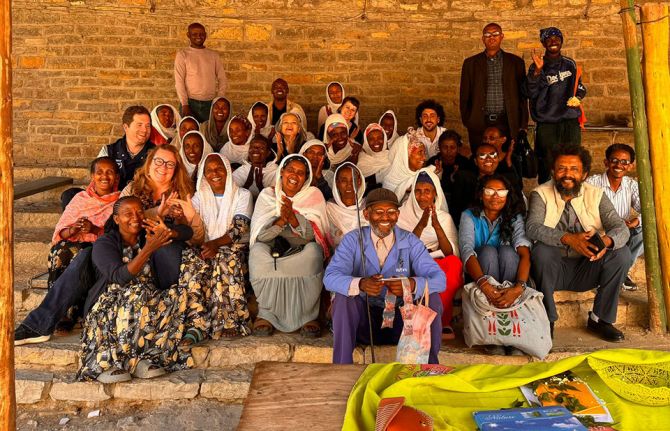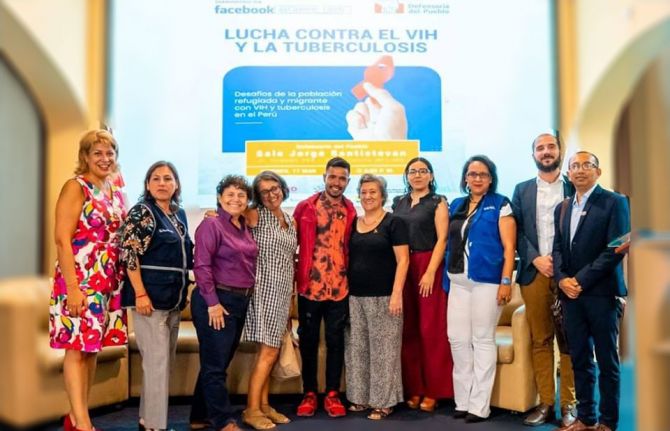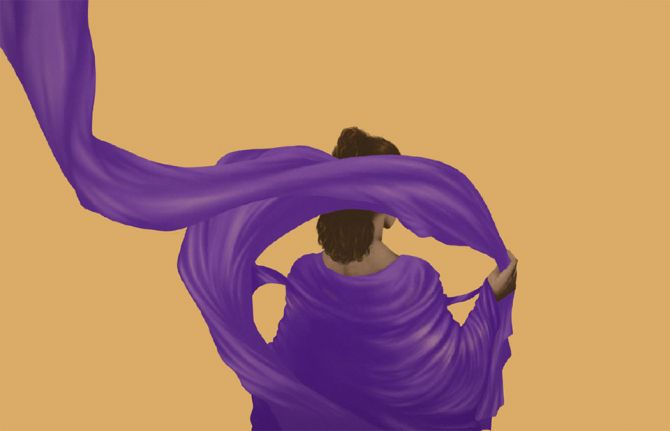
Feature Story
World Refugee Day: ‘What would you do?’
20 June 2012
20 June 2012 20 June 2012
An estimated 4.3 million people were forcibly displaced in 2011, seeking shelter either within their homeland or across a border in another country.
Credit: UNHCR/B.Bannon
How does it feel to become a refugee? How do people fleeing their homes cope with the life and death choices confronting them? To mark World Refugee Day, observed on June 20 every year, stark questions like these are posed by the UN High Commissioner for Refugees (UNHCR) in a new campaign.
The campaign, Dilemmas, seeks to promote understanding of refugees, asylum-seekers, the stateless and internally displaced people by vividly humanizing their experience and reinforcing the fact that they are ordinary individuals faced with extreme and extraordinary situations. A key element of the initiative, along with high profile TV spots by UNHCR Special Envoy Angelina Jolie and other celebrities, is a role playing game called My Life as a Refugee. The game can be played on smartphones and it is being promoted on various digital platforms around the world.
Players choose one of three characters and then have to make a series of difficult decisions to help them reach safety and rebuild their lives. For example, if you opt to be 27 year old Merita, a pregnant mother of two, you will encounter a series of life changing events: ‘Conflict encircles your village, you run for your lives but realize your mother is no longer with you. Do you go back and face death in a war zone or try to escape?’
More people becoming refugees
Such dilemmas are affecting an increasing number of individuals and families. A new publication by the UNHCR, 2011 Global trends: A year of crises, states that 2011 saw more people becoming refugees than at any time this century. 4.3 million people were newly displaced, with around 800,000 of these fleeing their countries and seeking refuge abroad. Cumulatively, by the end of 2011 there were a total of 42.5 million people around the globe forced to move: 15.2 million as refugees, 26.4 million as internally displaced and 895,000 were asylum seekers.
The publication highlights a number of major humanitarian crises in countries such as Cote, d’Ivoire, Libya, Somalia, and Sudan which has led to these mass movements.
According to António Guterres, UN High Commissioner for Refugees, “2011 saw suffering on an epic scale. For so many lives to have been thrown into turmoil over so short a space of time means enormous personal cost for all who were affected….. These are testing times.”
AIDS, Security and Humanitarian Response
Those made to leave their homes and communities in the harshest of circumstances can become more vulnerable to HIV. They often lose their source of income and may have to resort to high-risk behavior to meet their basic needs. Health and education services frequently lapse and information on HIV prevention and treatment provision may be disrupted. Women and girls can be especially vulnerable as rape is often used as a weapon during conflicts. In some cases refugees and internally displaced people also face stigma and discrimination as they are accused of spreading the virus.
“2011 saw suffering on an epic scale. For so many lives to have been thrown into turmoil over so short a space of time means enormous personal cost for all who were affected….. These are testing times.”
António Guterres, UN High Commissioner for Refugees
UNHCR, as one of UNAIDS Cosponsors, promotes and supports the development of comprehensive HIV programmes to make sure refugees have access to HIV prevention, treatment, care and support.
A report on AIDS, Security and Humanitarian Response presented at the 30th UNAIDS Programme Coordinating Board highlights the many and varied ways in which the UNAIDS family and its partners are supporting the HIV response in humanitarian emergencies. A major objective has been mainstreaming AIDS into the overall humanitarian intervention, integrating it as a cross-cutting issue. The report raises a number of concerns that governments and organizations need to take into account, such as providing refugees with continued access to antiretroviral therapy (ART) and HIV prevention services, as well as strategies which deal with broader issues like gender-based violence.
Concrete steps have been taken in a number of areas. For example, several countries have revised their National AIDS Strategic Plans to encompass a range of provisions for the needs of populations of humanitarian concern. In addition, access to ART for refugees has increased markedly. Almost 95% of those in Africa, Latin America and the Middle East and North Africa regions can now get ART at a level similar to the surrounding population. In Africa three quarters of pregnant refugee women have access to programmes to eliminate new HIV infections among children.
A number of other successes are pinpointed. The over half a million Somali refugees in the Dadaab camps in Kenya now benefit from comprehensive reproductive health and HIV services. These include ART, condoms, emergency obstetric interventions and programmes to eliminate new HIV infections among children. This is part of a multi-partner strategy covering refugees and mobile populations across the Horn of Africa. On the Thai-Myanmar border by 2011 tens of thousands of refugees had begun to receive HIV prevention services and post-exposure prophylaxis (PEP) for survivors of sexual violence.
In working with refugees and the displaced to help them get their lives back on track, UNHCR and its partners promote the need for tolerance, empathy and compassion. By presenting real life dilemmas and asking individuals; ‘What would you do?’ the UNHCR’s World Refugee Day campaign provides a powerful spur to understanding the hardships refugees endure and why staying at home may not be an option.



